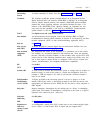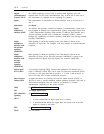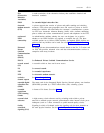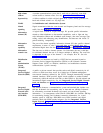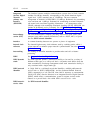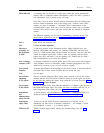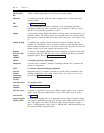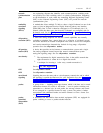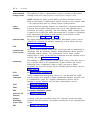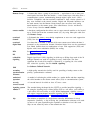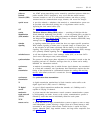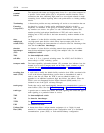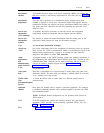
GLOSSARY
GL-15
network
synchronization
plan
nonfacility
associated
signaling
(NFAS)
off-premises
extension (OPX)
off-premises
station (OPS)
ones density
OPS
OPX
out-of-band
signaling
packet
packet
assembler/
disassembler
(PAD)
An engineering diagram that identifies each customer-premises switching node
and specifies how each switching node is to obtain synchronization. Depending
on the distribution of work, either the controlling Regional Engineering Center
(REC) or the National Engineering Center (NEC) will provide the network
synchronization plan.
A method that allows multiple T1 links to share a single D-channel on one of the
spans to form an Integrated Services Digital Network primary rate interface
(ISDN-PRI). One T1 link is therefore configured as 23 B-channels plus 1 D-
channel, while the other spans that share the D-channel are configured with 24
B-channels each. See also facility-associated signaling and Integrated Services
Digital Network primary rate interface.
A trunk-side analog telephone line that has several capabilities not normally
available to telephone lines. Among these are a collection of call-detail records
and traffic data that are needed on telephone lines used to access host computers,
and certain transmission characteristics desired for long-range, off-premises
operation. See also off-premises station.
A device that provides service between a communications system and a single-
line analog telephone located beyond the normal communications-system
analog-line signaling range. See also off-premises extension.
1.
The requirement for digital transmission lines in the public network that
eight consecutive 0s cannot be in a digital data stream.
2.
A technique for inserting a 1 after every seventh-consecutive 0.
See also zero code suppression.
See off-premises station.
See off-premises extension.
Signaling that uses the same path as voice-frequency transmission and in which
the signaling is outside the band used for voice frequencies See also Integrated
Services Digital Network basic rate interface and Integrated Services Digital
Network primary rate interface.
A group of bits — including a message element, which is the data, and a control
information element (IE), which is the header — used in packet switching and
transmitted as a discrete unit. In each packet, the message element and control
IE are arranged in a specified format. In many systems, the packet is further
encapsulated with additional header and trailer elements to form a frame. See
also packet switching.
A functional unit that enables data terminal equipment (DTE) not equipped for
packet switching to access a packet-switched network.



